Ultimate UK Data Protection Act 2018 Checklist for Full Compliance
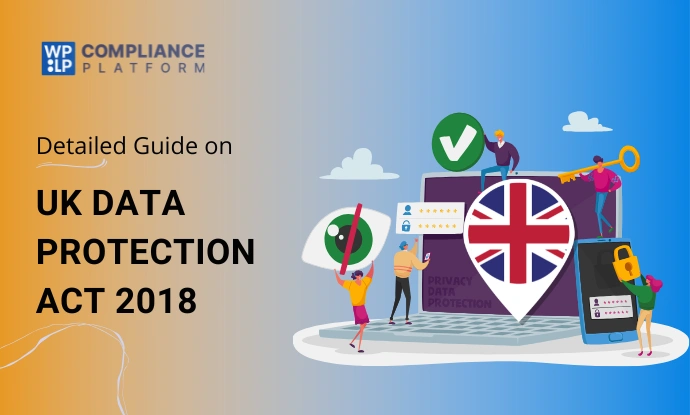
Summary
Non-compliance could result in a fine of up to £17.5 million or 4% of your global turnover. Solutions such as WPLP Compliance Platform help businesses stay compliant with privacy policies, cookie consent management, and templates that are updated regularly for ongoing changes in regulations.
Are you collecting or processing personal data in the UK? If so, the UK Data Protection Act 2018 impacts your business, and non-compliance could result in heavy penalties.
The UK Data Protection Act 2018 is the primary legislation governing personal data privacy in the United Kingdom.
It works alongside the UK General Data Protection Regulation (UK GDPR), a version of the EU GDPR that was adapted after the UK left the European Union in 2020.
The Act gives individuals key rights over their data, such as the right to access, correct, or delete their information. It applies to any business or organization that processes the personal data of UK residents and is enforced by the Information Commissioner’s Office (ICO).
Continue reading, as this guide will explore everything you need to know about the UK DPA, including your obligations, rights, and risks.
- What is the UK Data Protection Act (UK DPA)
- Who Must Comply With the UK Data Protection Act?
- What are the Consumer Rights Under the UK DPA Law
- How Businesses Can Comply With UK Data Regulations
- How is the UK DPA Different from the GDPR Law?
- UK DPA Law Penalties and Fines for Non-Compliance
- FAQ
- Conclusion
What is the UK Data Protection Act (UK DPA)
In 2018, the UK introduced a new law called the Data Protection Act (DPA 2018). This law replaced the older Data Protection Act from 1998. The goal was to update the rules to fit today’s digital world and match the EU’s data protection law, known as the GDPR (General Data Protection Regulation).
Before this, in 2003, the UK had already created another law called the Privacy and Electronic Communications Regulations (PECR) to deal with privacy in electronic communications, like emails and texts.
Even though the DPA 2018 and the EU GDPR started before the UK left the European Union in 2020, the UK still needed to make sure the rules continued to apply after Brexit. So, the UK took the text of the GDPR and turned it into a UK version called the UK GDPR, using a law called the European Union Withdrawal Act 2018.
At the same time, the DPA 2018 was updated to match the new UK GDPR. Now, both laws work together to protect people’s personal data in the UK. This also helped the UK get approval from the EU so that data could keep flowing between the UK and EU without extra rules.
The DPA 2018 is made up of seven parts. Three of those parts deal with how data is used:
- One part is for general use (by most businesses and public bodies)
- One part is for law enforcement
- One part is for national security
Today, the UK GDPR and DPA 2018 are almost the same as the EU’s GDPR. They all give people strong rights over their personal data and set clear rules for how businesses must handle that data.
Who Must Comply With the UK Data Protection Act?
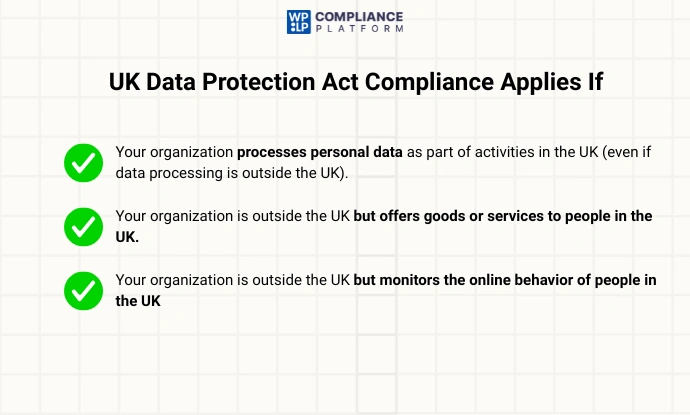
The UK Data Protection Act compliance applies to a wide range of organizations based on what kind of data they handle and where they operate. It covers what kind of data is processed, where the organization is located, and where the people whose data is processed are based.
It applies to:
- Organizations that process personal data as part of their activities in the UK, even if the actual data processing happens outside the UK.
- Organizations located outside the UK that offer goods or services to people in the UK.
- Organizations located outside the UK that monitor the online behavior of people in the UK.
What are the Consumer Rights Under the UK DPA Law
The UK Data Privacy Law 2018 determines the rights of UK citizens as written in the UK GDPR, which include the right to:
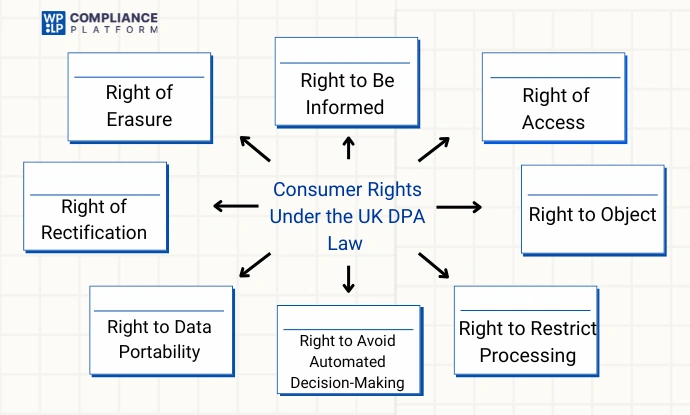
1. Right to Be Informed
People have the right to know how their personal data is collected and used. Organizations must explain this clearly and in simple language. This includes who is collecting the data, why they’re collecting it, what rights the person has, and whether the data will be shared or sent to another country. People should also know who to contact for questions or complaints.
For example, a shopkeeper collects user data for marketing purposes. They must provide a privacy notice explaining: who collects the email, why it’s needed, whether it’s shared with partners, and how users can contact support about their data.
2. Right of Access
Everyone has the right to see the personal data that an organization has collected about them. They can also ask why the data was collected, how long it will be stored, and with whom it has been shared. If the data is sent to another country, the person must be told about it. People can also ask for a copy of their data. However, this right doesn’t apply in certain cases, like for crime prevention or legal confidentiality.
For example, a person uses a fitness app to track his/her performance. When the person asks about the personal data that it has collected. The app must provide all the details.
3. Right of Rectification
If a person finds that their personal data is wrong, incomplete, or outdated, they can ask the organization to correct or update it.
For example, a user sees their name spelled incorrectly in their bank account records. They can request the bank to correct the name and update all related documents.
4. Right of Erasure
Also known as the “right to be forgotten,” this lets people request the deletion of their data. They can make this request if the data is no longer needed, if they withdraw consent, if the data was collected unlawfully, or if the law requires it to be deleted.
For example, a user deletes their account from a photo storage site and requests that the company erase all their images and data. If the data is no longer needed or consent is withdrawn, the company must delete it.
5. Right to Data Portability
People can ask to receive their personal data in a format that is easy to use and share with another organization. This applies only when the data was collected with the person’s consent and handled using automated systems.
For example, a user wants to switch from one music streaming service to another. They request a downloadable file of all their playlists and preferences so they can upload it to the new platform.
6. Right to Object
Anyone can ask an organization to stop using their personal data, especially if it’s being used for direct marketing or research purposes. The organization must stop unless it has strong legal reasons to continue.
For example, a user starts receiving direct marketing emails from a clothing brand. They can object to their email being used for marketing, and the brand must stop sending promotions.
7. Right to Restrict Processing
People can ask organizations to limit how they use personal data in certain situations. For example, if the data is incorrect, if the organization collected it unlawfully, or if the person objects and is waiting for a decision. During the restriction, the organization can use the data only for specific legal reasons or with the person’s consent.
For example, a person notices their utility bill has incorrect address details. While the company corrects the error, the person can ask the company to restrict the use of their personal data until it’s fixed.
8. Right to Avoid Automated Decision-Making
People can say “no” to decisions made entirely by computer systems. This right does not apply if the person gave consent, if the law allows it, or if it’s needed for a contract.
For example, a bank uses AI to approve loans without human review. A user can request a manual review of their application instead of relying solely on an automated decision.
9. Notification Obligation
If someone requests their data to be corrected, deleted, or restricted, the organization must tell everyone it previously shared the data with, unless doing so is impossible or would take too much effort.
For example, A user asks a social media company to delete their personal photos. The company must notify any partner apps or third parties that accessed or stored those photos to remove them too.
10. Exceptions to These Rights
Not all rights apply in every situation. Some exceptions include cases involving crime prevention, tax collection, national security, immigration control, or protecting the public. In such situations, the law allows organizations to limit or deny certain data rights.
For example, a person under criminal investigation requests access to police data collected about them. The police can deny this request to avoid interfering with crime prevention and investigation efforts.
How Businesses Can Comply With UK Data Regulations
To comply with the UK Data Protection Act 2018 and UK GDPR, businesses must follow clear rules on how they collect, use, and protect personal data.
Businesses should also offer at least two ways for consumers to exercise their privacy rights, such as a data subject access request (DSAR) form, a cookie consent banner, or an active email address.
It’s also essential to prepare the site for Universal Opt-Out Mechanisms (UOOM) like GPC and allow users to exercise their rights in a verifiable opt-out option.
Below are some key steps businesses can take to stay compliant.
Privacy Policy Generator
Creating a privacy policy is a legal requirement under the UK data subject rights and UK GDPR requirements. The WPLP Privacy Policy Generator helps you easily create a clear, correct, and user-friendly policy.
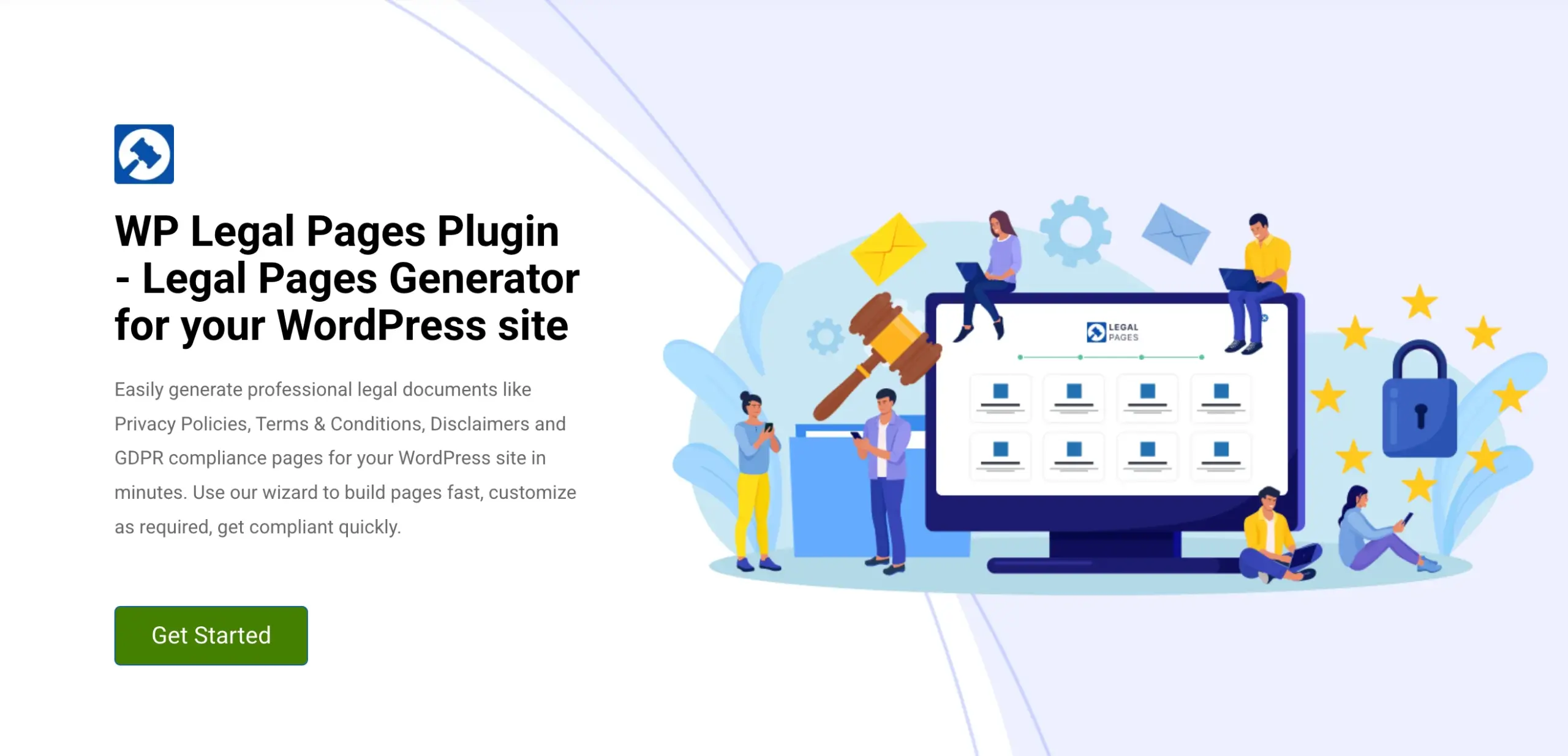
You get access to 35+ ready-to-use policies like Privacy Policies, Disclaimers, Terms and Conditions, and more that are compliant with GDPR, CCPA, LGPD, Quebec Law 25, and other major privacy laws.
This policy tells your visitors what data you collect, why you collect it, how long you keep it, and who you share it with. It also explains their rights and how they can use them. A good privacy policy builds trust and keeps your business legally safe.
To create your privacy policy page, simply follow a few easy steps and answer some basic questions about your business. Within minutes, your fully customized privacy policy will be ready.
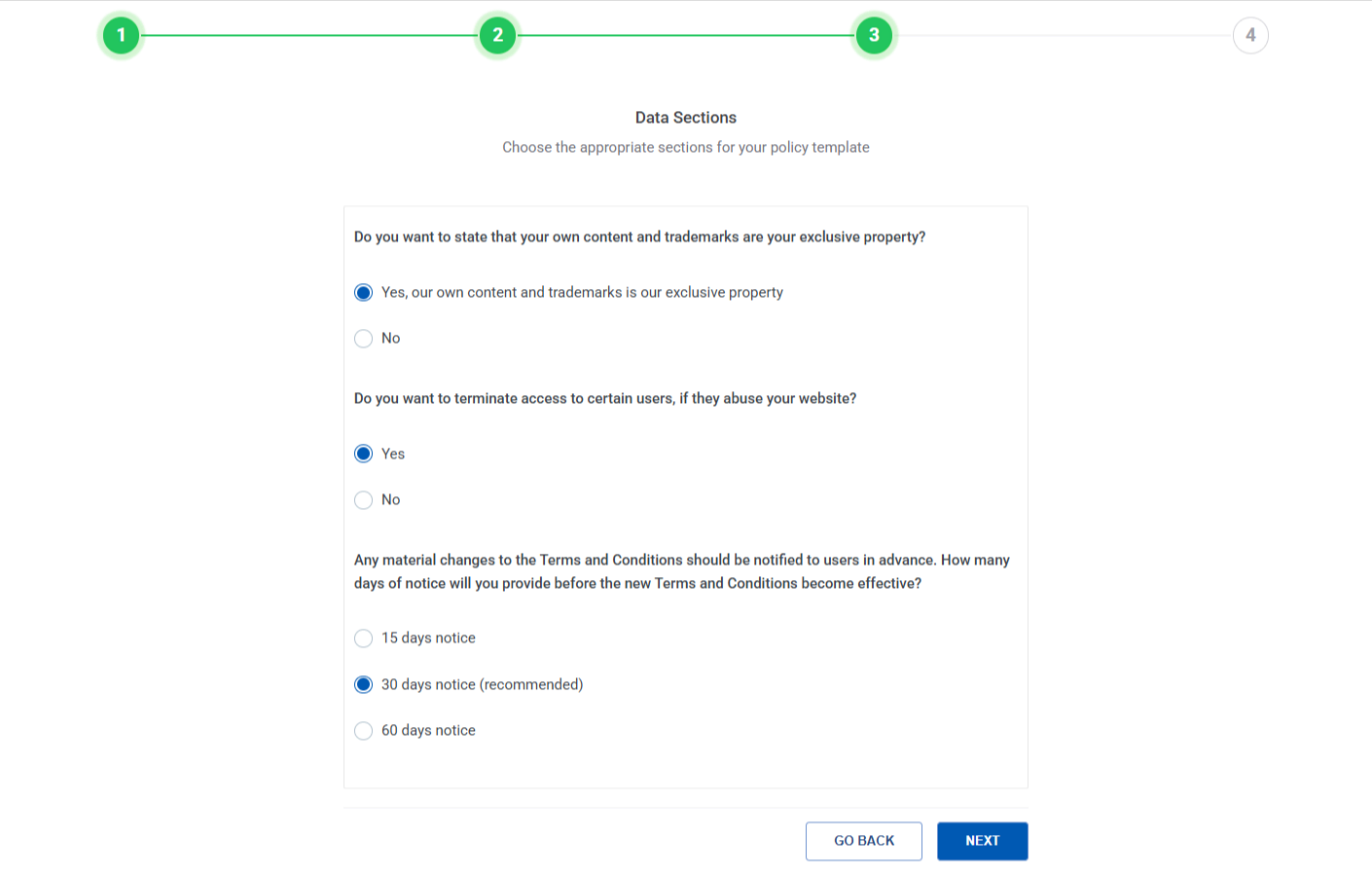
Here’s an example of what it looks like:
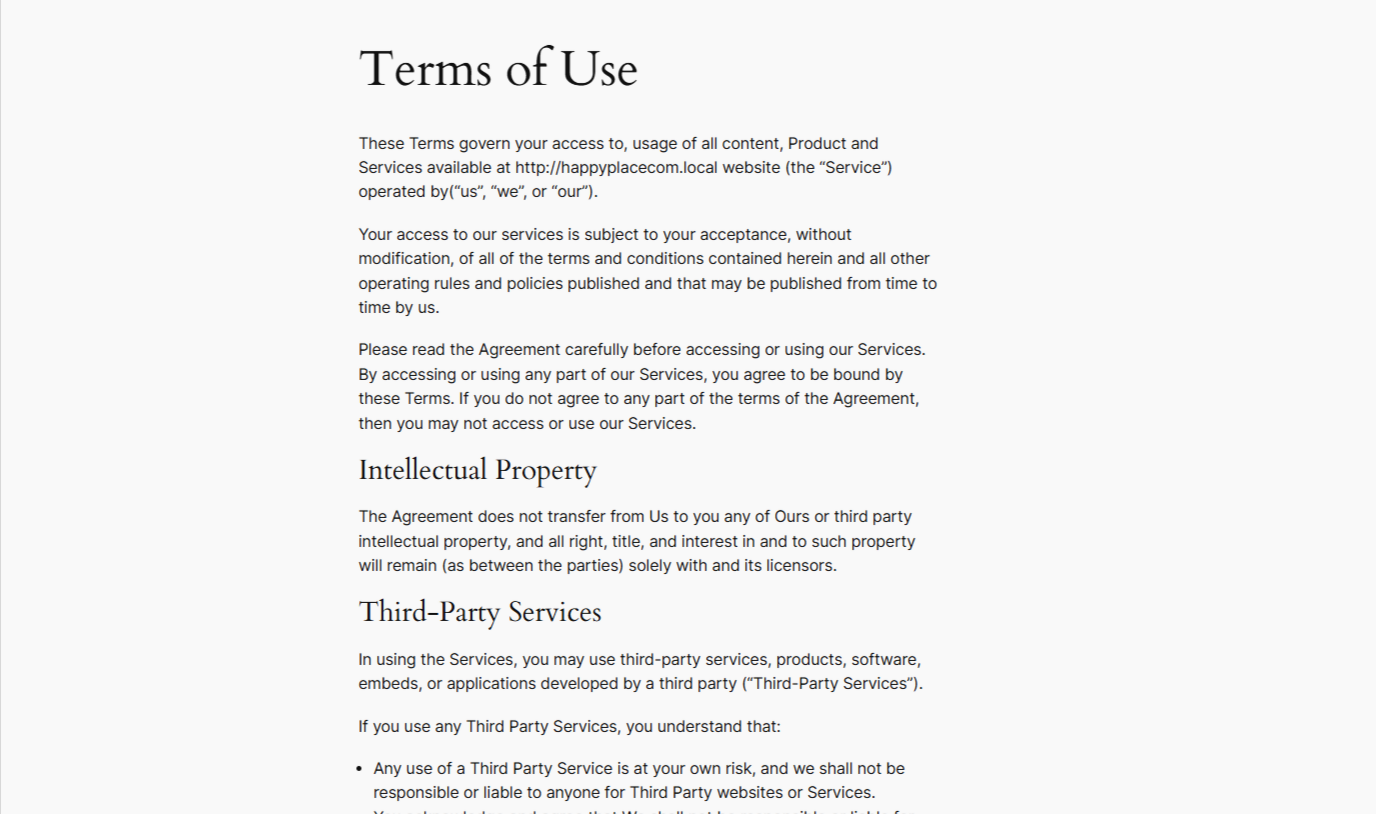
Cookie Consent Manager
The UK data laws say you must ask users before placing cookies on their devices, especially if those cookies are used for ads or tracking.
The WPLP Cookie Consent Manager shows a cookie banner on your website so users can choose what they accept.
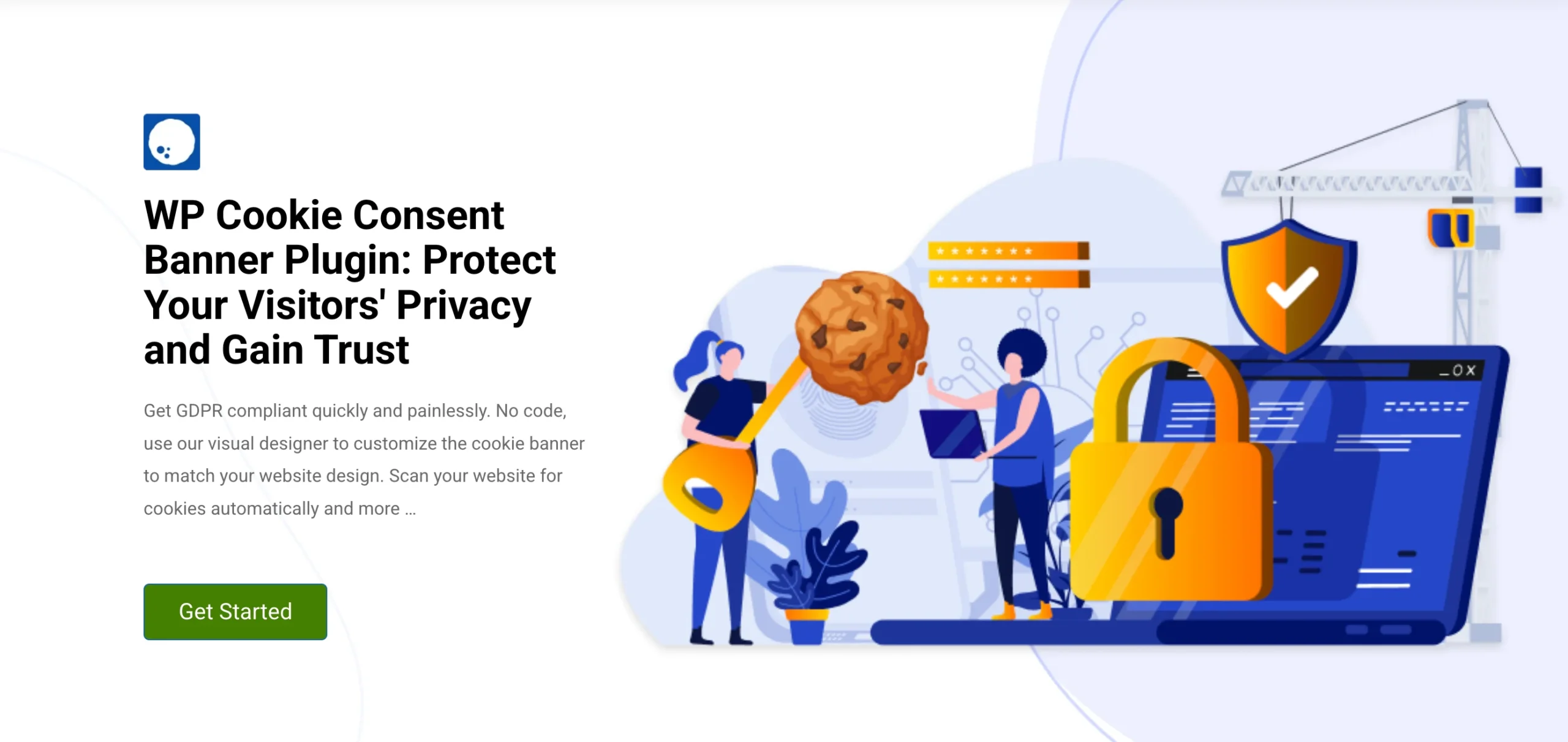
It blocks non-essential cookies until users give permission, stores their choices, and helps you follow the law.
It includes powerful features like cookie categorization, consent logging, a cookie consent manager, geo-targeted banner, and Google Consent Mode v2. Additionally, it provides data request forms to help users manage their data rights.
The tool also supports IAB TCF 2.2, enhancing data transparency and helping reduce legal risks.
More importantly, the platform follows the opt-out measures outlined in the UK Data Protection Act.
Here is what it looks like in the screenshot below.

Appoint a Data Protection Officer (DPO) If:
- You handle large amounts of personal data: If your business regularly collects or monitors a lot of personal data, like thousands of customer records, you may need a DPO to make sure you’re following the law and protecting that data properly.
- You collect sensitive data: If you handle private data like health details, fingerprints, or racial background, you must appoint a DPO. This person will help you manage and protect that sensitive information.
- You are a public authority: If you’re a public organization like a school, council, or government office, you’re required to have a DPO. They ensure that data is handled legally, fairly, and responsibly.
How is the UK DPA Different from the GDPR Law?
The EU GDPR and the UK DPA regulations are mostly based on similar principles of data protection and privacy management. Here are some key differences between them:
- National security and crime: GDPR allows changes in specific cases like national security, crime, or legal matters under Article 23.
- Freedom of information: The UK DPA exempts GDPR rules when data is processed for national security, defense or by certain government bodies handling manual data.
- Compliance reports: The UK DPA requires organizations to keep policy documents explaining how they handle and protect special category data.
- Data subject access request: The UK DPA allows exceptions where organizations can deny access requests in certain cases.
- Age of consent: GDPR sets the minimum age at 16, while the UK DPA lowers it to 13.
- ICO codes of practice: The UK DPA regulations require the ICO to issue codes of practice for handling data in specific situations or industries.
| Feature | EU GDPR | UK DPA 2018 / UK GDPR |
|---|---|---|
| Geographic Scope | Applies to EU countries and international organizations handling EU residents’ data. | Applies to the UK and international organizations handling UK residents’ data. |
| Supervisory Body | EU-based (EDPB and national bodies) | UK ICO |
| Legal Status | An EU-wide regulation directly applicable in all member states. | UK domestic law combines the Data Protection Act 2018 with the UK GDPR. |
| National Derogations | Limited | UK-specific exemptions and adaptations |
| Adequacy Decisions | Made by EU Commission | Made by the EU Commission |
UK DPA Law Penalties and Fines for Non-Compliance
In case of non-compliance or ignoring information, assessment, or enforcement notices, administrative fines can be imposed on an organization or individual.
The standard maximum fine is £8,700,000 or 2% of the organization’s global annual turnover from the previous year, whichever is higher. This is usually applied for violations by controllers, processors, certification bodies, or monitoring bodies.
Organizations face higher fines of £17,500,000 or 4% of global annual turnover if they violate the data protection principles.
Even in cases when they fail to respect data subject rights, unlawfully transfer data to other countries or organizations, or fail to comply with an Intensive Correction Order (ICO).
To avoid such penalties and fines, use the WPLP Compliance Platform and make sure you follow the law and stay compliant.
FAQ
The UK DPA 2018 is the national data protection legislation that complements the UK GDPR. It governs how personal data is processed in the UK.
It applies to any organization that processes the personal data of individuals in the UK, including companies outside the UK offering services to UK residents.
Businesses can be subject to a penalty of up to £8.7 million to £17.5 million, or up to 4% of global turnover.
To ensure compliance with UK Data Privacy requirements, businesses should maintain transparent policies, collect only the necessary data, and utilize the WPLP Compliance Platform’s privacy policy generator and cookie consent management to secure user data protection.
While largely similar, the UK DPA 2018 and UK GDPR apply to the UK only and include UK-specific adjustments. The EU GDPR continues to evolve independently.
Conclusion
The UK Data Protection Act 2018, along with the UK GDPR, forms a strong legal foundation for safeguarding personal data in the UK.
This law explains how organizations in the UK must collect, use, and share personal data. It also gives individuals important rights, allowing them to know what data is collected about them and how it’s used, and even request access to or control over their personal information.
To avoid any penalties and to stay compliant with the law, businesses should update their privacy policies and add a Data Subject Access Request (DSAR) form to their website.
Platforms like WPLP make compliance easier with tools like auto-generated privacy policies and cookie consent banners. It is regularly updated to reflect changes in privacy laws, so your policies remain current. With easy integration for consent notices and policy links, WPLP simplifies transparency and user trust while making legal compliance quick and hassle-free for WordPress site owners.
And by following the law and respecting user rights, you not only avoid penalties but also build trust with your audience.
If you like this article, you can consider reading.
- Must-Know CPA Requirements: A Quick Guide to Colorado’s Privacy Law
- WPLP Compliance Platform vs Complianz: Which is Better?
- Connecticut Data Privacy Act (CTDPA) – A Complete Overview
Grab the WPLP Compliance Platform now!
